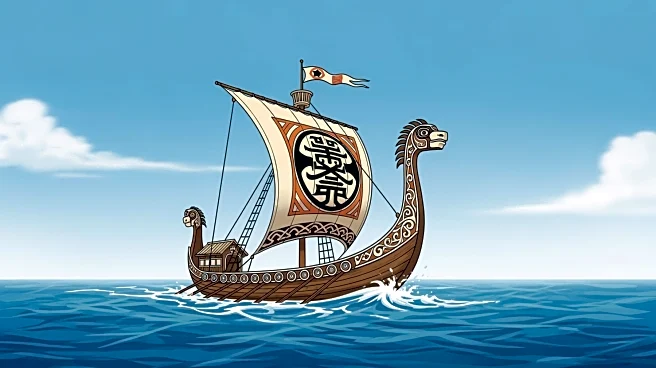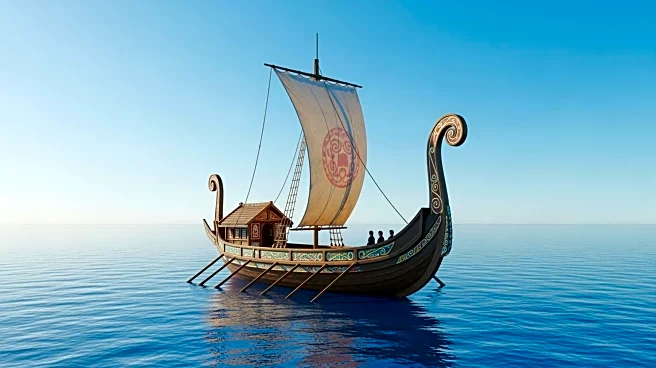What's Happening?
Recent research suggests that the first humans to migrate to North America may have sailed from north-east Asia around 20,000 years ago. This theory is supported by the discovery of stone tools in Hokkaido,
Japan, which resemble those found in North America. Loren Davis, a professor of anthropology at Oregon State University, highlights that this finding indicates a much earlier migration than previously believed. Traditionally, it was thought that the first Americans arrived by foot around 13,500 years ago via a land bridge from eastern Russia. However, new evidence, including human footprints in New Mexico dated between 16,000 and 20,000 years ago, supports the idea of an earlier migration. The study, published in Science Advances, suggests that these early migrants could have been experienced seafarers capable of navigating the Pacific coastal currents.
Why It's Important?
This research challenges long-held beliefs about the migration patterns of early humans to North America, suggesting a more complex and earlier timeline. The implications of this study are significant for understanding human history and migration. It positions the first Americans as part of a broader Paleolithic world, connecting North America to north-east Asia. This could reshape historical narratives and influence future archaeological research. The findings also highlight the role of innovation and cultural exchange in human migration, offering insights into the adaptability and resilience of early human societies.
What's Next?
Further archaeological excavations and research are needed to confirm these findings and explore the potential underwater evidence along the eastern Pacific rim. As sea levels rose at the end of the last ice age, many artifacts may now be submerged. Continued exploration in both North America and north-east Asia could provide additional insights into the migration routes and cultural exchanges of early humans. This ongoing research may lead to a deeper understanding of the technological and cultural legacy shared by these ancient populations.
Beyond the Headlines
The study underscores the importance of interdisciplinary research in archaeology, combining genetic, cultural, and technological evidence to reconstruct human history. It also raises questions about the adaptability of early humans to diverse environments and their ability to innovate in response to challenges. This research could inspire new methodologies in archaeological studies, emphasizing the need to consider multiple lines of evidence when reconstructing historical events.













